
There's a cathedral window that sits atop a flight of stairs overlooking the main waiting area at the Toronto Coach Terminal at Bay and Edward streets.
Lighting up with the late afternoon sun, it bears the name Gray Coach Lines, a reference to the bus operator that originally called the terminal home back in 1931.
Now you're more likely to see a Greyhound than a Gray Coach, but for 64 years the latter was a common sight on Toronto roads and Ontario highways.
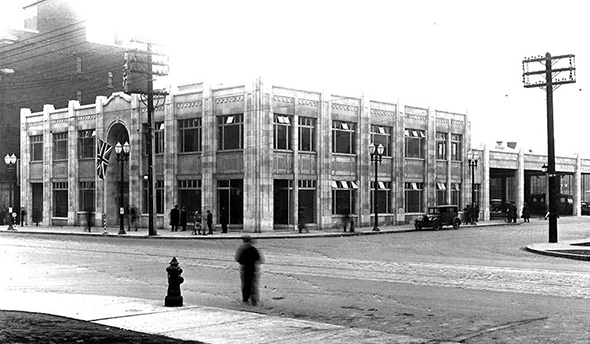
Toronto Coach Terminal at Bay and Edward streets.
Gray Coach Lines was founded by the Toronto Transportation Commission in 1927 as a sightseeing tour operator and suburban commuter service meant to replace the old radial railways that serviced places like Mimico, Richmond Hill, and Schomberg.
Over the following decade, the TTC snapped up competing operators across the province, which ushered in a vastly expanded reach for Gray Coach.
By the mid 1930s, the bus operator provided service to places like Barrie, Guelph, Hamilton, Buffalo, and, of course, Niagara Falls, a route that was particularly popular given its tourist status.
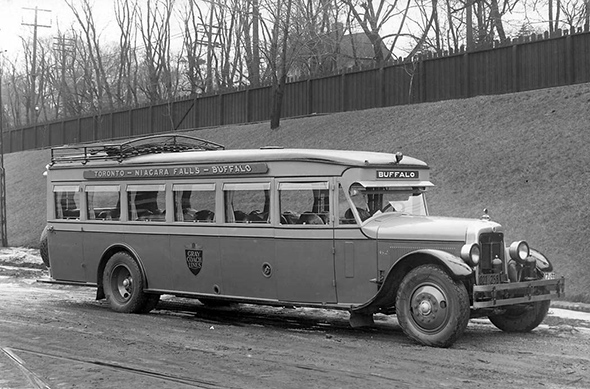
A bus that took passengers from Toronto to Niagara Falls.
When the TTC built the Toronto Motor Coach Terminal in the early 1930s, it was in response to the growing popularity of bus travel, which was booming at the time.
A whole world of inexpensive travel was opened up by the motor coach, and people ate it up. Car ownership was yet to become widespread, and the bus offered a measure of freedom that was in high demand.
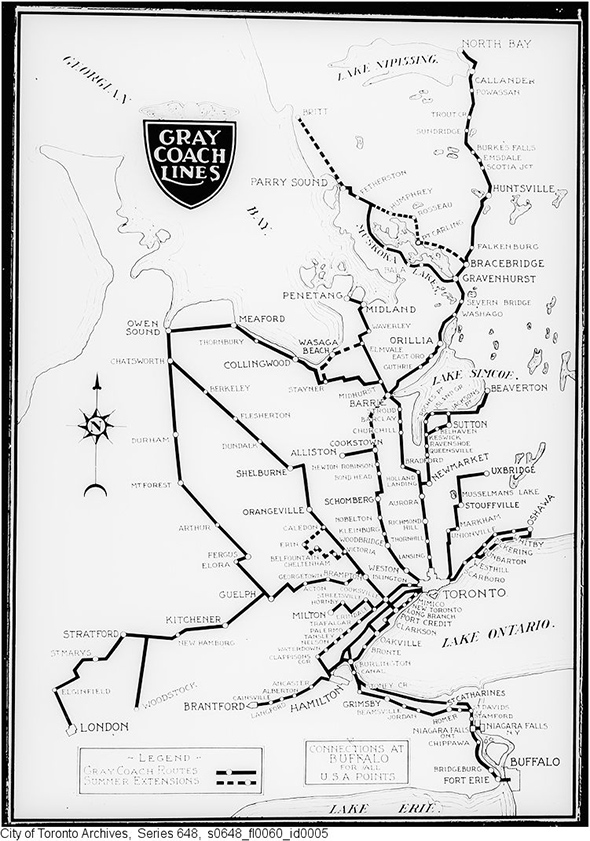
A map showing routes offered by Gray Coach.
By the 1950s, the range of destinations reached by Gray Coach covered most of Southern Ontario and extended as far north as Sudbury.
While the bus has always been a lower class of travel to the train and the car, this was something of a golden age for these vehicles, where the greater number of towns and cities serviced by the motor coach mirrored the post-war fantasy of ever increased mobility.
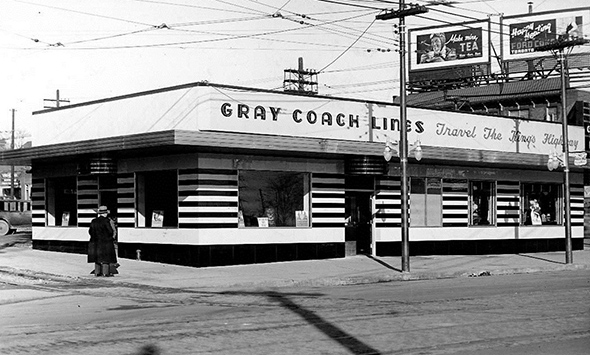
The Gray Coach Lines bus terminal at Sunnyside.
The spirit of Gray Coach Lines is perhaps best captured in a photo of its Sunnyside bus terminal in the 1950s. Perched at the edge of the city, the striped building brims with the promise of exploration and travel.
"Travel the King's Highway," an accompanying slogan reads, marking the degree to which the bus was deemed a dignified way to travel.
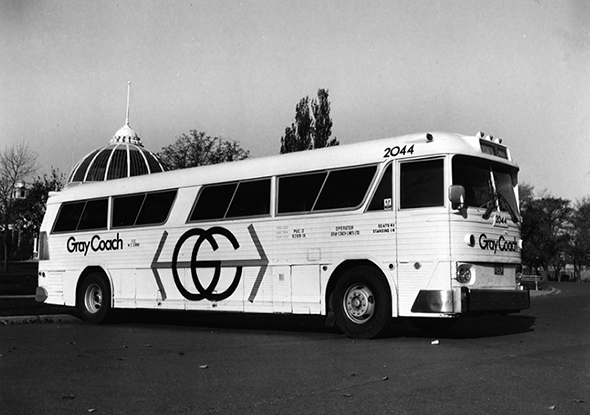
A Gray Coach bus.
That would eventually fade with a dramatic rise in the popularity of commercial air travel in the 1960s and '70s, but there's a lingering romance to coach travel even as it's deemed an inferior mode of transportation.
Air travel is destination-driven, while the bus offers the double promise of escape and exploration captured in the figure of the road.
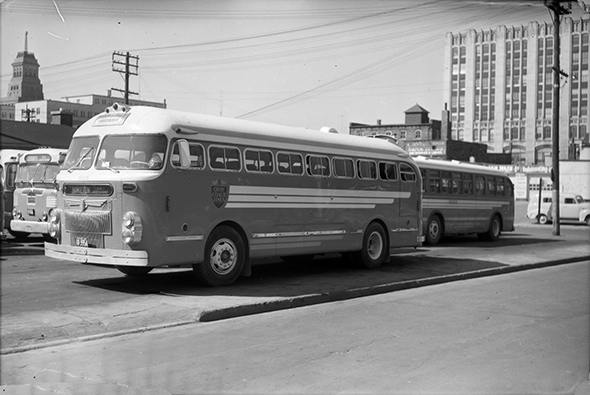
What buses looked like back in the day.
By the time GO Transit was founded in the early 1970s, Gray Coach was contracted to operate some of the routes it already serviced, but despite the strength of the operation at the time, the ability of the TTC to run the company would eventually come under pressure from competitors like Greyhound and Trentway-Wagar.
By 1990 the decision was made to sell Gray Coach Lines in order to focus exclusively on urban transit. The company was eventually acquired by Greyhound and Ontario Northland in the early '90s, leaving behind our coach terminal as a legacy of its former domination of inter-city bus travel in Southern Ontario.
by Derek Flack via blogTO

No comments:
Post a Comment